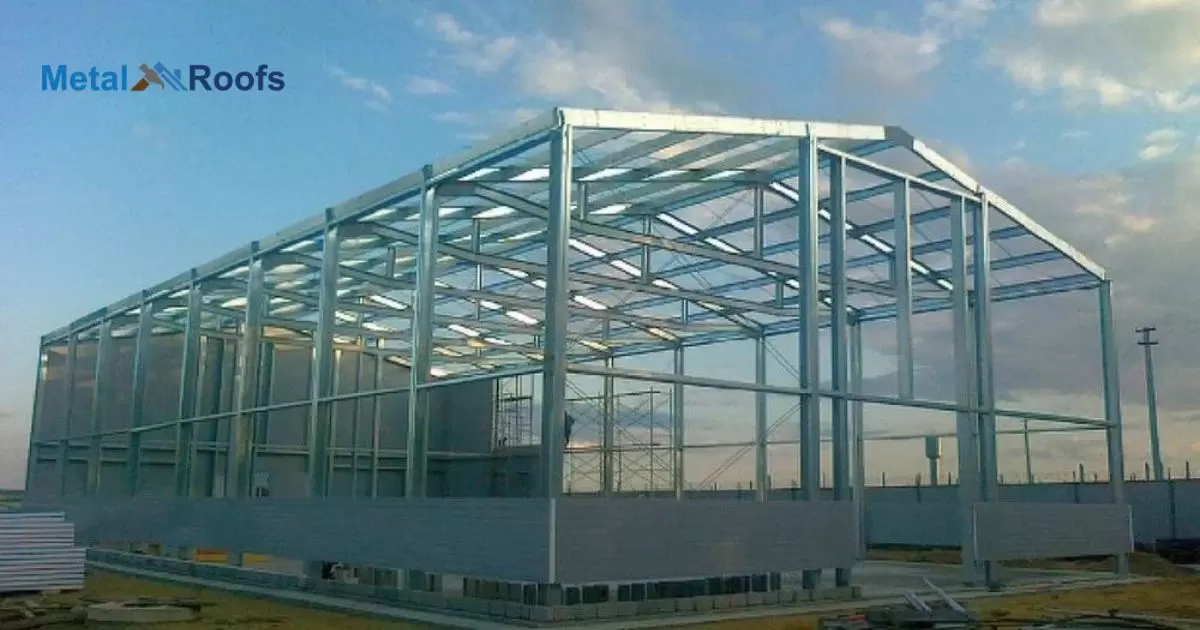A 2×4 span refers to placing 2×4 boards horizontally across roof rafters to create a nailable surface for installing metal roofing panels; the 2x4s provide adequate support for the metal roofing while spaced widely enough apart to allow installation without needing to remove the 2x4s.
A 2×4 roof span supports metal roofing. How far can a 2×4 span for a metal roof ? Proper 2×4 spacing prevents sagging over time yet allows easy installation. Knowing the maximum span length lets you space supports correctly.
The maximum 2×4 span for metal roofing depends on factors like snow load, roof pitch, and wood type. Typically, spans up to 4 feet are suitable for standard 40 psf snow loads. For longer spans, consider installing skylight through attic for added support.
Key Takeaways
- 2×4 rafters can span up to 8 ft for a metal roof
- Longer spans up to 12 ft require larger rafters like 2x6s
- Max span depends on wood type, rafter spacing, and load capacity
- Follow local building codes and consult a professional for long spans
What Is The Maximum Span For A 2×4 In Metal Roofing?
A 2×6 span is more appropriate for structural support in metal roofing compared to smaller lumber like 2×4, considering factors such as roofing material and local codes.
It’s crucial to consult with an engineer or local authorities for proper span guidance. They consider factors such as snow loads and wind when determining safe spans. Following their advice ensures a sturdy and secure roof structure. Always prioritize safety and adherence to building codes when planning your roofing project.
Factors Affecting The Span Of A 2×4 In Metal Roofing
| Factors | Description |
| Roofing Material Weight | Heavier roofing materials may require shorter spans for adequate support. |
| Local Building Codes | Codes may specify minimum requirements for spans based on location. |
| Environmental Conditions | Factors like snow load and wind resistance influence span considerations. |
| Roofing Design | The design of the roofing system impacts the load distribution. |
| Structural Integrity of 2×4 Lumber | The quality and condition of the 2×4 lumber affect its load-bearing capacity. |
The span of a 2×4 in metal roofing depends on several factors. The type of metal roofing and local building codes matter. Snow load and wind conditions play a role too. Generally, 2×4 lumber isn’t the norm for roof framing due to its limited capacity. Consult a structural engineer or building code official for guidance.
They’ll ensure your roof is safe and meets regulations. Using larger dimension lumber, such as 2×4 rafters, is more common for structural framing. Always prioritize safety and adherence to regulations in roof construction.
Guidelines For 2×4 Span In Metal Roofing
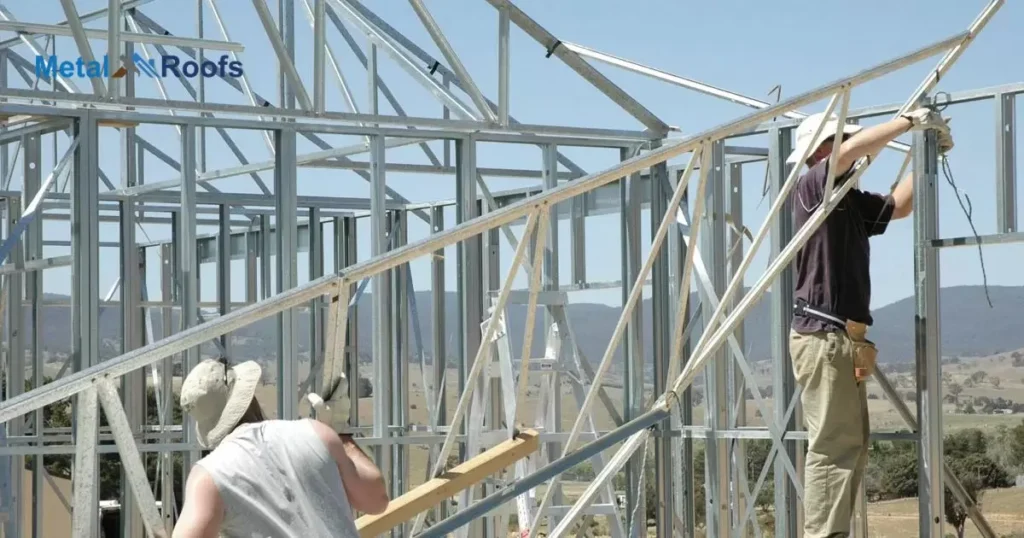
When considering 2×4 span for metal roofing, it’s vital to prioritize safety. 2×4 lumber has limited load-bearing capacity and isn’t typically used for structural framing in roof construction. Consult with a structural engineer or local building code official to determine the appropriate span and spacing.
When assessing the weight 2×4 rafters can support, consider factors like metal roofing material, building codes, snow loads, and wind loads. These elements provide crucial guidance for a safe and durable roof.
Calculating The Maximum Span Of A 2×4 For Metal Roofing
When considering 2×4 span for metal roofing, it’s vital to prioritize safety. 2×4 lumber has limited load-bearing capacity and isn’t typically used for structural framing in roof construction. Consult with a structural engineer or local building code official to determine the appropriate span and spacing.
When installing metal roofing on an old house with 2×4 rafters, consider factors like local building codes and snow load requirements. Ensure safety and structural integrity by following recommended guidelines.
Ensuring Safety And Compliance In 2×4 Spans For Metal Roofing
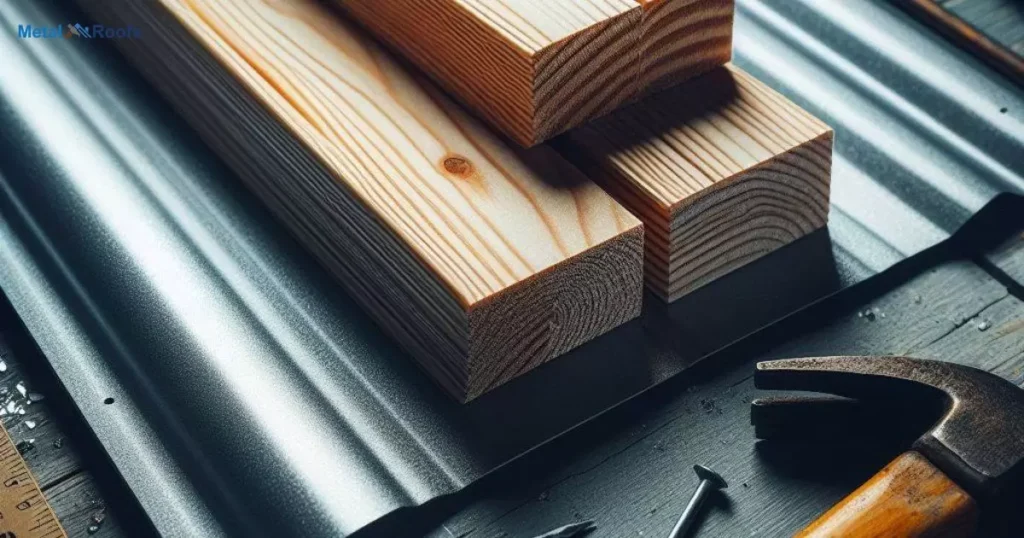
When planning 2×4 spans for metal roofing, prioritize safety and compliance. Ensure proper load-bearing capacity by consulting a structural engineer or local building code official. Follow guidelines for spacing rafters or trusses according to your area’s requirements. Use larger dimension lumber like 2×6 or 2×8 for better structural support.
Confirm adherence to snow load and wind load specifications to withstand environmental factors. Avoid relying solely on 2x4s for roof framing due to their limited strength. Always prioritize safety and consult experts to ensure a structurally sound roof.
Roof Rafter Spacing, Span, and Sizing Requirements
When planning a roof, consider rafter spacing carefully. This impacts the span and sizing requirements. Always adhere to local building codes. Consult an expert for safe and efficient construction.
Rafter Spacing for Metal Roofs
When planning rafter spacing for metal roofs, consider factors like local building codes and the type of metal roofing material. Generally, for 2×4 rafters, typical spacing ranges from 16 to 24 inches apart.
Rafter Spacing for Pergolas
When building a pergola, rafter spacing is crucial. It determines the strength and stability of the structure. Typically, rafters are spaced 16 to 24 inches apart. The exact spacing may vary depending on factors like the size of the rafters and local building codes.
16” Spacing or 24” Spacing for Rafters
A 16” spacing provides more support but requires more material and labor. 24” spacing can be cost-effective but may not be suitable for heavy roofing materials or high wind areas. Consulting with a professional can help determine the best option for your specific needs.
When is 19.2 Rafter Spacing Used?
19.2 rafter spacing is used primarily in residential construction for roofs. It’s common when installing roof sheathing or drywall. This spacing is optimal for 8-foot sheets, reducing waste and labor costs.
Spans for Rafters with Attached Ceilings
When determining spans for rafters with attached ceilings, consider the load-bearing capacity of the materials. Use larger dimension lumber like 2×6 or 2×8 for structural framing. Consult with a structural engineer or local building code official for guidance on appropriate span and spacing.
How Many Rafters Do You Need?
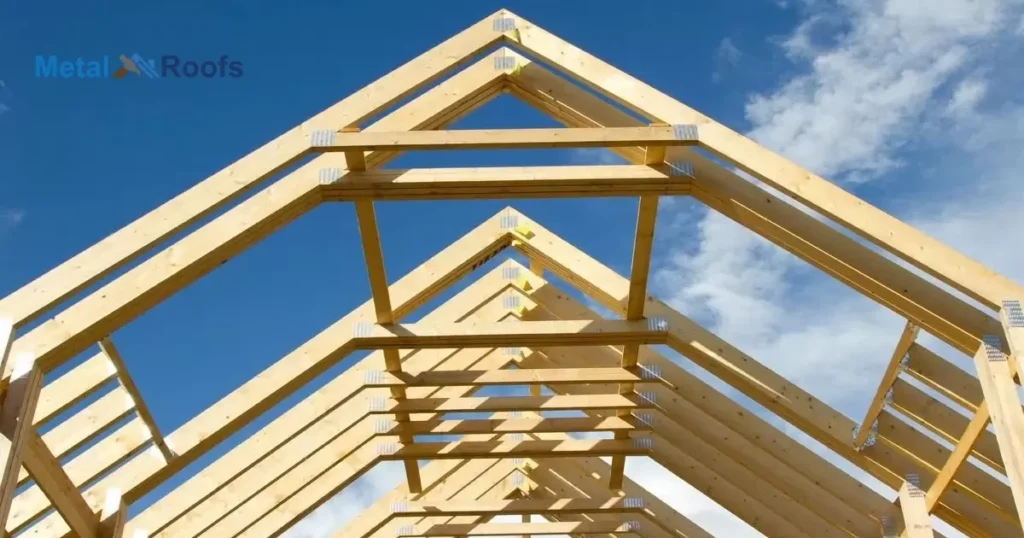
When deciding how many rafters you need for your roof, consider factors like the size of the roof and the spacing between rafters. Typically, you’ll need more rafters for larger roofs and less for smaller ones.
The spacing between rafters depends on factors like the type of roofing material and local building codes. To determine the number of rafters required, divide the length of the roof by the spacing between rafters. Ensure proper support and stability by following building codes and consulting with professionals.
How Far Can A 2×4 Overhang?
Determining how far a 2×4 can overhang requires considering its load-bearing capacity. A 2×4’s strength diminishes as it extends beyond its support.
Generally, a 2×4 can safely overhang up to one-third of its length. This means a 2×4 spanning 8 feet can overhang up to 2 feet without significant risk of structural failure.
It’s essential to consult building codes and a structural engineer to ensure safe practices for your specific project. Improper overhangs can lead to sagging or even collapse. Always prioritize safety and structural integrity when designing and constructing any overhangs using 2×4 lumber.
Type of Lumber Matters
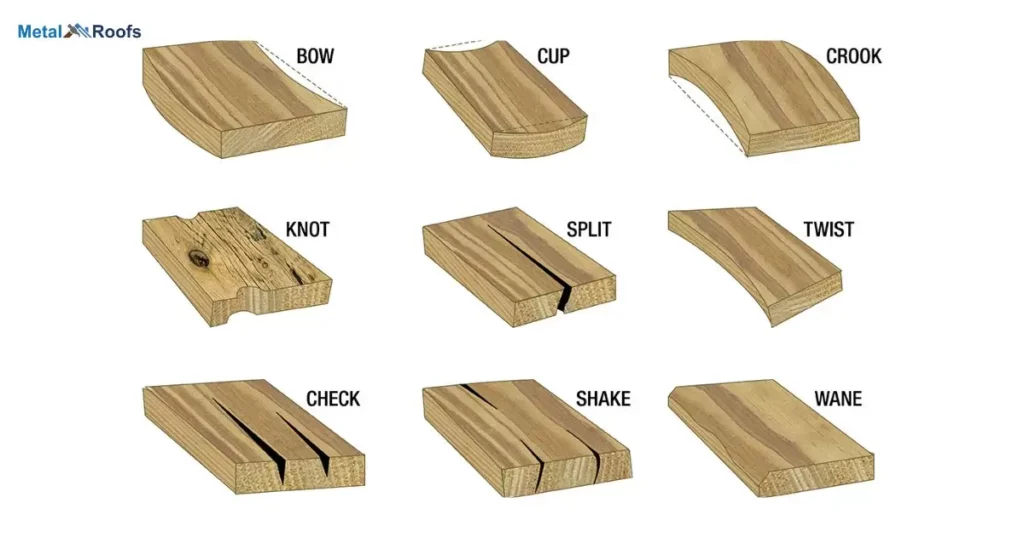
Yes, the type of lumber you choose matters a lot when it comes to construction projects, woodworking, or any application where you need to use wood. Here are a few key reasons why the lumber type is important:
Strength and Structural Integrity: Different wood species have varying degrees of strength, hardness, and density. For structural applications like framing, joists, and beams, you need to choose lumber that can bear the required loads without excessive deflection or failure.
Softwoods like pine and fir are commonly used for framing, while hardwoods like oak and maple are stronger and more suitable for heavy-duty applications.
Workability: Some wood types are easier to cut, sand, and shape than others. Hardwoods like maple and cherry are generally denser and more challenging to work with than softwoods like cedar and pine. The workability of the lumber can affect the tools and techniques required, as well as the overall quality of the finished product.
Appearance and Aesthetics: The grain pattern, color, and texture of different wood species vary significantly. For projects where the appearance of the wood is important, such as furniture, cabinetry, and flooring, the lumber type can have a significant impact on the final aesthetic.
Durability and Resistance: Some wood species are naturally more resistant to rot, insect attacks, and weathering than others. For outdoor applications or areas with high moisture exposure, rot-resistant woods like cedar, redwood, or treated lumber may be preferred over woods that are more susceptible to decay.
Cost and Availability: The cost and availability of different lumber types can vary based on factors like species, region, and demand. Some exotic or rare wood species can be significantly more expensive than common softwoods or domestic hardwoods.
Frequently Asked Questions
How far can a 2×4 span for a ceiling?
A 2×4 can span up to 10 feet for a ceiling with proper support. Factors like the type of wood and load requirements influence the span. Consult a structural engineer for specific guidance to ensure safety.
Can a 2×4 span 14 feet?
No, a 2×4 can’t span 14 feet safely for a metal roof. It’s too weak. Use larger lumber for longer spans, like 2×6 or 2×8. Always check with experts to ensure safety.
What is the maximum span of a 2×4 purlin?
The maximum span of a 2×4 purlin depends on factors like roofing material and local codes. Typically, it spans around 3 to 5 feet, but consulting a structural engineer is essential for precise guidance.
Conclusion
Properly spacing 2×4 roof supports is crucial. Span too far and the 2x4s may sag over time. This causes an uneven roof surface and stress on panels. Tested spans utilize the strength of 2×4 lumber without overextending it.
Follow manufacturer guidance on maximum spans. Consider weight variables like local snow loads in your area. Installing supports at less than maximum spans adds a safety factor. It also allows easy metal panel installation. Careful 2×4 spacing creates a solid base for metal roofing for years.
